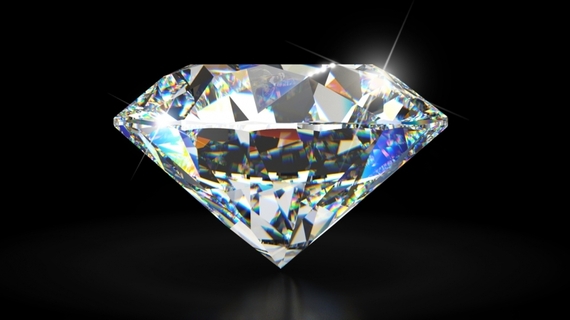Diamond is a beauty to behold and its uniqueness makes it easily admirable. Nevertheless, purchasing it comes with the great task of having to distinguish it from its look-alike. Diamond occurs naturally and as a result, its proof of identity needs to come from the determination of various chemical and physical properties. Some of the useful properties are such as refractive properties, conductivity, hardness and optical properties.
It is important you equip yourself with basic information about diamond before going to shop for it. Aside from the fact that diamond is a major investment, there are shady retailers out there willing to prey on any innocent person's ignorance. Having knowledge about the 4C, that is, the diamond clarity, the diamond cut, the diamond colour, and the diamond carat is essential.
Here are some tests that you can carry out at home all by yourself, or anywhere that you might come across a stone that looks like diamond without engaging a gemologist:
1.Observe the diamond through a loupe
Various tests can be conducted using a loupe. A loupe is simply a magnifying glass that can be easily acquired in almost any jewellery store. This kind of magnifying glass allows you to closely observe the diamond and its setting. They are few observable features that are likely to be noticed when observing real diamond. To start with, most diamonds are products of nature and therefore, there are some imperfections in the carbon. On the other hand, fake stones are absolutely perfect. In some rare occasions, some lab-grown stones may also look perfect. Hence you should be cautious not to discard perfect gems.
Another test that can be carried out by using a loupe is observation of the edges of the diamond. Real diamond has sharp edges while the counterfeit one has somewhat rounded edges.
Finally, you can decide to examine the mountings and engravings. You can especially observe any indicators that the stone was used. Chances are that if the stone is gold or silver plated it is not a diamond. In most cases, diamonds are set in platinum or mounted in gold. If the setting in which what you suspect to be diamond is poor, then it is not a real diamond.
2.Using a sandpaper against the 'gem'
Diamonds are among the world's hardest stones. Consequently, it wouldn't be scratched by the rough surface of the sandpaper. The most common "fake" diamond is cubic zirconia. If you scratched it with a sandpaper it would scratch up just like any other material that is not a diamond.
3.Doing the fog test
Diamonds are known to be good conductors of heat. To verify that a material is a real diamond, this property can be put to test. Just breathe on the surface of the stone you want to test the same way you would breathe on the bathroom mirror. Any other stone that looks like diamond including cubic zirconia will be hazy for a moment. This is because they do not conduct heat and therefore, the warm breath condenses on the surface before it dissipates. In the case of a real diamond, the fog dissipates immediately. However, moissanite passes this test and you should be careful to do other tests.
4.Sparkle Test and refractivity
The sparkle test requires you to hold the gem in light and observe how it sparkles. Diamonds have high refractive index and therefore, they sparkle more than other materials. When you look inside the diamond, it sparkles white and grey colours. This is called brilliance. When a real diamond is observed outside it reflects rainbow colours on its surfaces. This dispersed light is called fire. Fake diamonds have rainbow colours inside and this is the delusion that most people have about diamonds.
Other minerals such as cubic zirconia, quarts or material like glass do not bend like the diamond does due to their low refractive index. Also, using the property of high refractive index you can carry out the read through effect test.
5.Read-through Test
If the diamond is unmounted you can place it on a piece of paper with some writings. If the diamond is real, you wouldn't be able to read the writings because all the light will be scattered. For the fake diamonds the writings might be magnified and visible enough to be read. Diamonds have numerous intricacies in their structure that it would be impossible for light to pass through.
Thus, the next time you bump into something you think could be diamond, remember to test it before making a purchase. However, remember to only use the test methods that are non-destructive.
